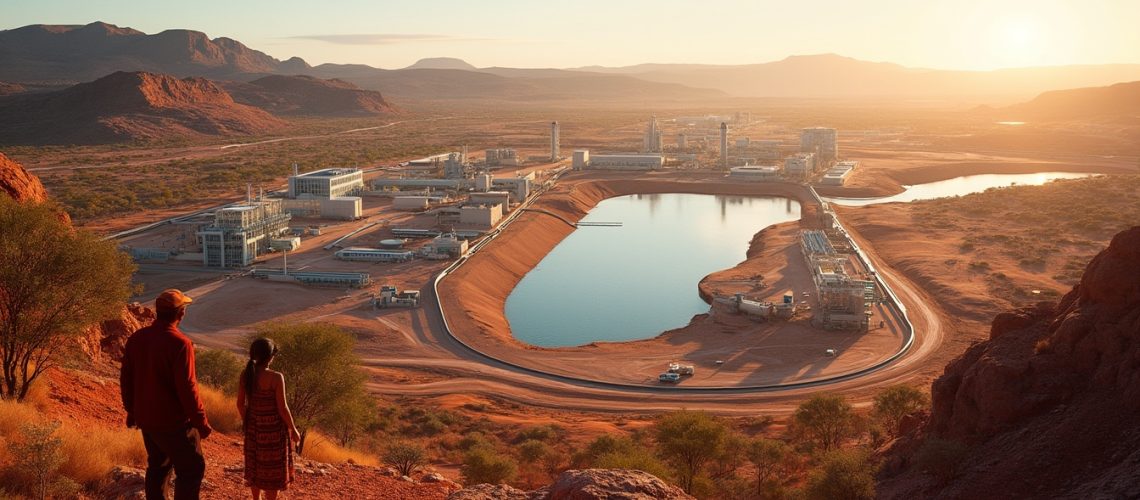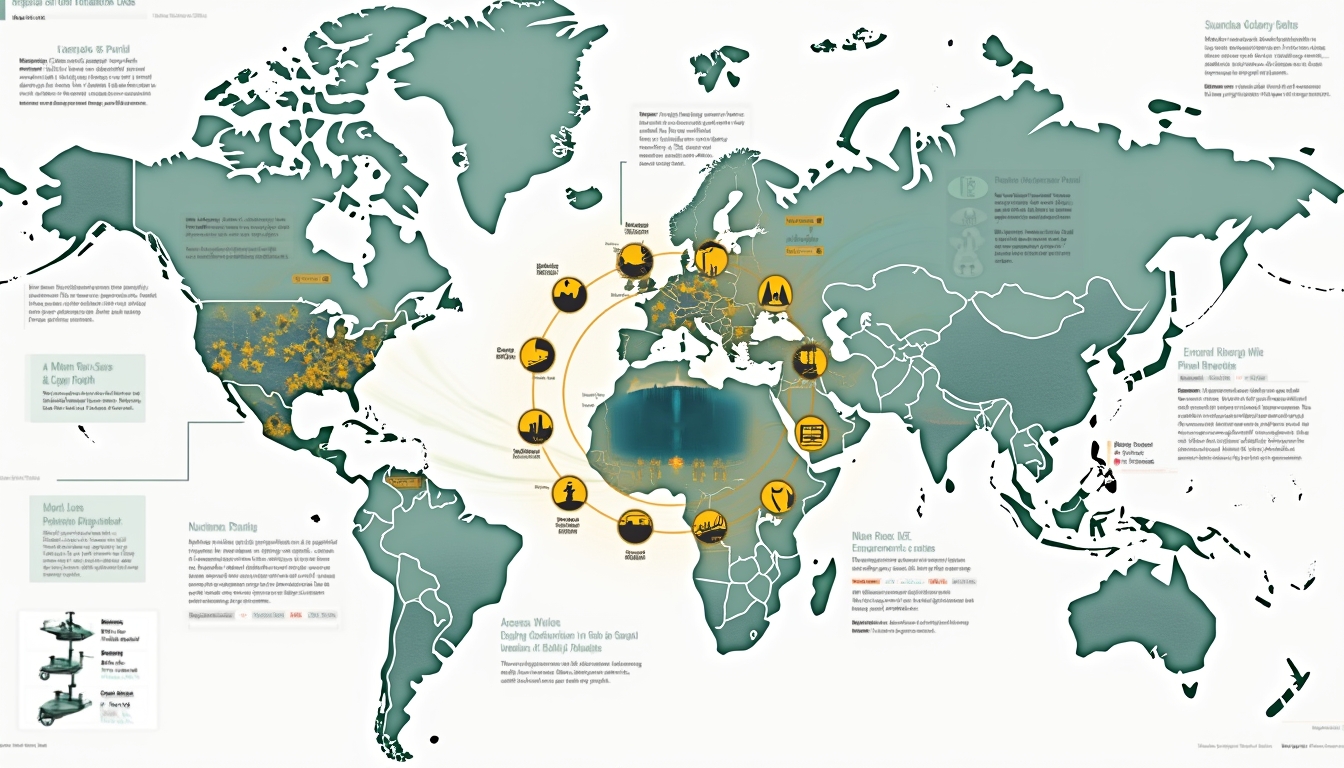The Pilbara region is at a critical crossroads as WA and Rio Tinto strengthen Pilbara water security amid mounting environmental and operational challenges. As water scarcity intensifies, both industry and government are adopting innovative, collaborative approaches to ensure sustainable long‐term solutions. WA and Rio Tinto strengthen Pilbara water security not only through state‐of‐the‐art desalination projects but also by integrating advanced technologies and strategic investments into the region’s resource management framework.
A Regional Lifeline: The West Pilbara Water Supply Scheme
The West Pilbara Water Supply Scheme is more than just an infrastructure project—it is a lifeline for communities and industries alike. Covering essential towns such as Karratha, Wickham, Dampier, Roebourne, and Point Samson, as well as critical industrial zones like Cape Lambert and the Burrup Peninsula, the scheme is designed to provide a resilient water network for areas where every drop counts.
Recent collaborative initiatives have influenced the planning and execution of this project. For example, initiatives to bolster water supplies resonate with news about a pilbara water project that showcases the determination of local authorities to secure water for the region.
Confronting Water Scarcity: Environmental and Operational Pressures
The Pilbara is confronting several water resource challenges:
- Reduced groundwater recharge, notably at Millstream and Bungaroo borefields
- Decreased surface water runoff at Harding Dam
- Major environmental impacts affecting both local ecosystems and Traditional Owner territories
These challenges demand not only technical but also culturally sensitive responses. WA and Rio Tinto strengthen Pilbara water security by integrating local Indigenous knowledge with modern water management techniques. This combination of tradition and innovation is viewed as critical for long-lasting success in the region.
Rio Tinto's Strategic Water Security Initiatives
In response to these challenges, Rio Tinto has taken decisive action with projects such as the innovative Dampier Seawater Desalination Plant. This transformative infrastructure project is expected to produce 4 gigalitres of water annually in its first stage—scheduled for completion by 2026—with an ambitious second stage due by 2027. The primary objective is to reduce reliance on the sensitive Bungaroo borefield and relieve pressure on dwindling groundwater supplies.
Rio Tinto’s holistic commitment to sustainability is further highlighted by its growing pursuits in modern energy solutions. Their clean energy investments are a strong indicator of their move towards cleaner operational models that complement the ambitious water security projects in the Pilbara.
Stakeholder Perspectives: Industry and Government in Sync
Rio Tinto’s Commitment
Recognising water as an indispensable resource, Rio Tinto has embraced a strategic shift that spans several critical sectors. Their approach includes:
- Streamlining extraction methods to protect ecologically sensitive sites.
- Incorporating sustainable water management practices to secure operational continuity.
- Enabling a broader strategic transformation with investments such as a recent lithium division strategy, which underscores the company’s agile response in a rapidly evolving market.
This evolving corporate strategy also echoes trends in the global mining sector. For instance, a notable 150 billion merger has set a benchmark for strategic investments across the resource industry, reinforcing the wider industry’s commitment to resource security and operational robustness.
The Government’s Holistic Approach
Government agencies in Western Australia are not only focused on infrastructural improvements. They are integrating comprehensive measures that consider social, environmental, operational, and cultural impacts:
- Developing policies that balance economic development with environmental sustainability
- Engaging proactively with Traditional Owner groups to address cultural sensitivities
- Implementing regulations that promote long-term water resource viability
This holistic view is further embodied by the existence of initiatives like the watertight partnership aimed at maintaining water security in the Pilbara. By taking such an integrative approach, WA and Rio Tinto strengthen Pilbara water security, ensuring that the project not only fulfils immediate needs but also lays the foundation for a resilient future.
Future Infrastructure and Technological Innovations
Long-Term Strategic Planning
Water Corporation is spearheading strategic initiatives that look far beyond the present. Proposals for climate-independent water sources and the exploration of alternative water infrastructure, including additional large-scale desalination plants envisaged by 2030, are in development. These forward-looking strategies are a testament to the commitment to sustainable water security across the region.
Key elements of this long-term strategy include:
- Greater reliance on renewable resources and alternative water sources
- Increased utilisation of state-of-the-art desalination technology
- Elevated cooperation between private and government bodies
- Investment in cutting-edge technology to monitor and manage water resources in real time
Embracing Technological Disruption
Modern technological solutions are an essential pillar in the drive to secure water for the Pilbara. One promising area is desalination technology, which plays a pivotal role in transforming seawater into potable resource while easing the pressure on already stressed groundwater reserves. Such technologies are bolstered by digital innovations, including the integration of virtual reality in mining, which enhances both operational safety and efficiency.
Across the globe, similar initiatives echo these trends. For instance, a significant 2.5 billion investment in Argentina’s lithium mining sector reflects a global appetite for innovation and sustainable practices, principles that are central to the water security efforts in the Pilbara.
Environmental and Cultural Considerations
The water security initiative prioritises environmental conservation and cultural sensitivities. With a keen awareness of the deep connection that Traditional Owner groups have with the land, the strategy involves:
- Active consultation with Indigenous communities to integrate traditional ecological knowledge
- Implementing water management protocols that respect cultural heritage
- Reducing the strain on local groundwater reserves to preserve ecological integrity
By taking these factors into account, stakeholders are working to ensure that progress does not come at the expense of the environment or cultural values.
Market and Regulatory Implications
The unique collaborative model between Rio Tinto and the Western Australian government serves as a blueprint for future public-private partnerships in resource management. Key aspects include:
- Proactive regulatory engagement designed to address emerging environmental challenges.
- Innovative public-private water management models that balance economic growth with environmental sustainability.
- Strategic responses to climate adaptation challenges that guarantee long-term water availability for all community stakeholders.
Moreover, recent initiatives such as the innovative water security release underline the forward-thinking nature of these projects. By placing a strong emphasis on research, development, and collaboration, WA and Rio Tinto strengthen Pilbara water security through practical, scalable solutions that benefit both current and future generations.
Wind-Up: Key Takeaways
- The Pilbara region is undergoing a transformative phase with innovative projects aimed at mitigating water scarcity.
- Collaborative efforts between WA and Rio Tinto are driving substantial improvements in water management, exemplified by state-of-the-art desalination projects and technological advancements.
- Sustainable practices and strategic investments—ranging from clean energy investments to critical mergers—are redefining the mining and resource sectors.
- A balanced approach that incorporates environmental, cultural, and operational perspectives is fundamental in securing the Pilbara’s future water supplies.
This comprehensive and forward-looking approach not only guarantees that water is available for industrial and community use but also ensures that ecological and cultural values are preserved. Through thoughtful planning, innovative technology, and robust partnerships, WA and Rio Tinto strengthen Pilbara water security, setting a precedent for sustainable resource management in challenging environments.
Want to Stay Ahead in Mining Investment Insights?
Discover powerful, real-time insights into mineral exploration with Discovery Alert's AI-driven notifications, designed to simplify complex market data and help investors—from newcomers to seasoned professionals—uncover potential opportunities in the dynamic ASX mining landscape. Start your 30-day free trial today and transform how you approach mineral investment strategies.







